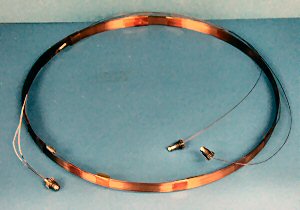


Once the scientists start the gas flow, the hydrogen carrier gas flows into the capillary columns. The Huygens GCMS has 3 columns. These columns are designed to detect compounds that the scientists think might be present:
The columns are 10 to 20 meters of very tightly coiled silcosteel (as seen in the diagram on the previous page) coated with chemicals on the inside. The coating chemical is specifically chosen so that when gas is injected into the system, certain compounds from the gas will be adsorbed (stick weakly) into the column walls.

The gas sample is injected into the 3 columns by momentarily opening a valve. The valve is then shut off, and the column is heated to a specified temperature. This releases the chemicals that are adsorbed on the wall, and they are sent to the detector for analysis.
Gas samples are taken approximately every 13 minutes. Of that time, 10 minutes are allotted for analyzing the sample; 3 minutes are allotted for cleaning the column out after analysis.